Japanese businesswomen / Global
Gender specifics
Japan’s culture is steeped in patriarchy but for business to thrive that needs to change. We meet four women who have overcome the hurdles to lead their field.
In Shinzo Abe, Japan finally has a prime minister with a plan for fixing the economy: more women in positions of power. The hard part is getting them there. Women make up just 3 per cent of seats on corporate boards and 12.6 per cent of parliamentary seats. The World Economic Forum’s global gender-equality ranking puts Japan at 104 of 142, an abysmal record for a country that passed its equal employment opportunity law three decades ago.
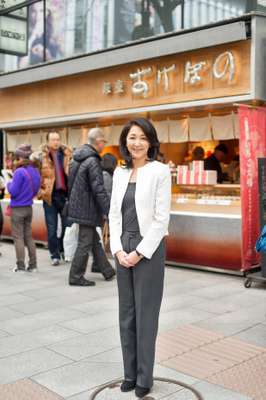
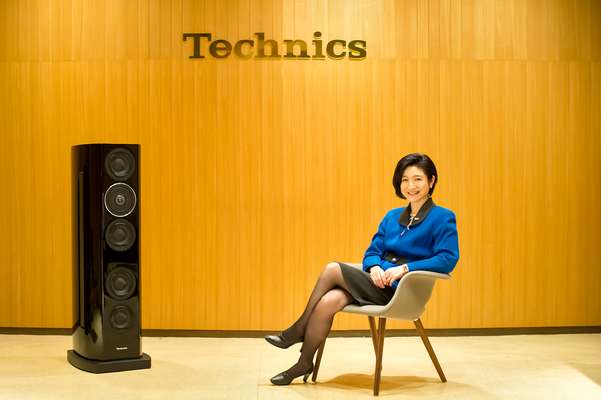
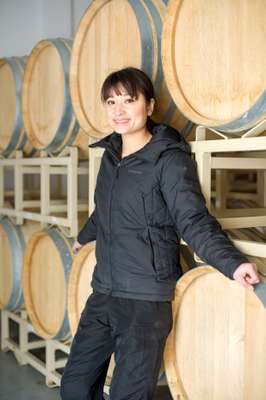
Abe says that empowering women can boost growth. Goldman Sachs agrees: it estimates that closing the workplace gender gap would add 13 per cent to Japan’s GDP. But Abe’s efforts – building nurseries so that women have childcare cover and telling business and political leaders to set targets for promoting women – won’t be enough for the government to reach its goal of 30 per cent female representation across various sectors by 2020. He also needs to reform an office culture that encourages killer hours, frowns on the taking of holidays and expects an unreasonable level of employee devotion.
There is reason to be hopeful. Lately some companies have begun talking about daibaashitii (diversity). A few have even come up with plans to change the make-up of their male-dominated executive ranks. The four women featured here, including Akebono’s president Kayo Hosono (pictured), have managed to excel despite the odds against them. Though their industries and paths to success differ, they are a glimpse of what a fairer and more dynamic Japan could look like.

01
Kayo Hosono
President, Akebono
When Kayo Hosono joined her father’s chain of wagashi sweet and rice-cracker shops straight out of university in the late 1980s, she assumed she would quit once she got married. But that plan didn’t pan out. Since 2004, Hosono has been the president of Akebono, overseeing the brand’s 94 shops in cities around Japan.
Now 51, Hosono meets Monocle at the original Ginza Akebono shop near the centre of Tokyo’s Ginza district. Opened in 1948 by Hosono’s grandfather, the shop sits on a main thoroughfare within sight of the area’s best-known landmarks: Mitsukoshi and Wako department stores. Not a second passes without someone walking by – or walking in. “It’s usually like this on weekends,” she says.
Hosono now leads a business that can boast ¥5.7bn (€43m) in annual sales. Its kuri-monaka sweets and other snacks have attracted a broad cross-section of Japanese society for decades.
When she took over, Hosono didn’t know any women in executive posts who she could confide in. At Akebono she brought in her husband to look after personnel. That allowed her to focus on overseeing product development. Another priority for Hosono: improving customer service. It wasn’t that the staff weren’t courteous and helpful. But there had never been an employee training programme that taught the company’s values. That became obvious when she carried out spot-checks on shops. “We now have outside experts who rate the level of our service,” says Hosono.
By the time Hosono took the helm she had been working on new sweets and packaging for years but felt the branding needed more consistency. Hosono centralised the design of displays and hired the renowned Kyoto-based designer Hisanobu Tsujimura to give her shops a makeover. Artisans made Shigaraki-yaki tiles for the floors and a shoji-like willow pattern of wood and paper to adorn the walls. As fast-fashion retailers have moved into Ginza, Akebono has had to adapt. “We need to innovate but we also represent a tradition in Ginza,” says Hosono. It’s a fine balance.
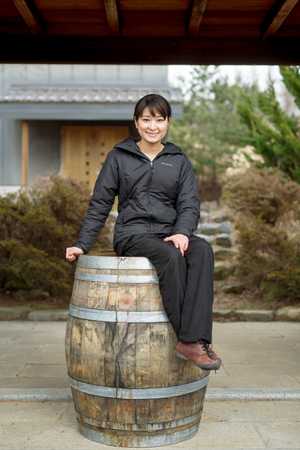
02
Ayana Misawa
Head winemaker, Grace Winery
There’s a common misconception Ayana Misawa faces overseas when she mentions her chosen profession. “If I say I’m a winemaker, people think of saké,” says the 34-year-old with a laugh. “I say, ‘No, I’m making grape wine.’”
In the village of Akeno, Misawa’s family estate Grace Winery grows koshu, an indigenous variety that thrives in the high-altitude climate and fertile soil of mountainous Yamanashi prefecture. As head winemaker, Misawa has turned what experts once regarded as an inferior grape variety into prized vintages that win high marks from oenophiles.
Misawa studied winemaking on four continents: the Institute of Enology and Viticulture in Yamanishi and the University of Bordeaux’s Institute of Vine and Wine Sciences, as well as at South Africa’s Stellenbosch University and wineries in France, South Africa, Argentina, Chile, New Zealand and Australia. “There aren’t many women making wine here but I didn’t meet many in the places I worked overseas either,” she says. “Japan is a male-dominated society. But the important thing is family and the quality of our wines.”
Chotaro Misawa started the winery in the town of Katsunuma in 1923. By 2002 the family had moved part of the vineyards to nearby Akeno. For such a well-known winery it’s a modest operation. Run by Misawa’s father Shigekazu, the Grace Winery estate covers just 15 hectares.
Misawa is constantly experimenting with different varietals but still koshu accounts for more than half of the grapes that the winery crushes annually. Misawa remembers her grandfather telling her that the grape had big potential. “I was very young and koshu was still regarded as second-rate but he always believed in its nobility,” she says. Her grandfather’s message is one that Misawa still passes on today.
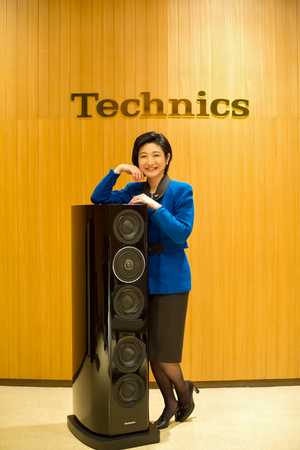
03
Michiko Ogawa
Director of Technics, Panasonic Corporation
When Panasonic announced it was reviving its much-loved Technics brand, audiophiles rejoiced. Women gave another cheer when it emerged that the person in charge would be Michiko Ogawa, who has been with Panasonic since 1986 when she graduated from the Science and Technology Department at the Keio University in Tokyo. Ogawa started her career at Panasonic – or, as it was known then, the Matsushita Electric Industrial Company – as an acoustic engineer working on several key products for Technics, including the world’s first ultra-slim large-diaphragm speaker. Ogawa later moved onto different roles within the company and says she was thrilled – and surprised – to be asked to head back to the audio department and lead the Technics revival.
“The idea to relaunch Technics came from the bottom up,” says Ogawa. “Many engineers wanted to relaunch the brand for a new high-resolution environment.” Now that music is consumed on everything from smartphones to laptops, Panasonic decided that if Technics were to succeed it would be at the upper end of the market. The first products – two groundbreaking digital stereo systems – were launched to great acclaim in January.
In her role as director Ogawa has a veto over what is known as “the sound committee”. It is her job to say when the engineers have created the right sound and she knows what she’s talking about. Not only is she an accomplished technical engineer, she is also a successful jazz pianist with an impressive 14 albums to her name. “There is a good synergy between my work and my music,” she says. “Sometimes our engineers can’t measure the difference between two sounds but there’s a different quality that I can sense.”
Beyond delivering the impressive specifications that are demanded by audio buffs, Ogawa wanted the new speakers to offer a sound based on musicality as much as technology. “It was important for us to deliver our philosophy and sound policy,” she says. “Our target is emotion.”
Ogawa is in charge of 50 engineers – all men. She says that people often express surprise that a woman is in charge. “Advanced digital technology is a closed world,” she says. “I feel a responsibility to change the environment and nurture more women. It should be more open to everyone, men and women.”

04
Miharu Koezuka
Senior marketing director, Takashimaya
When Miharu Koezuka joined the board of directors of department-store operator Takashimaya two years ago it was big news in the industry. None of the company’s rivals in Japan had ever promoted a woman from within their own ranks to a board position.
Koezuka’s rise to senior managing director – third in the line of command at the €6.4bn company – came years after the top brass began talking about the need for diversity. Women now make up more than half of the company’s 15,200 employees and this year executives have set a goal of having women in 20 per cent of managerial positions, up from 18 per cent last year. “We are among the leaders in the industry on this,” says Koezuka, 59.
As the head of sales and overseas ventures for the 184-year-old retailer, Koezuka has one of the company’s trickiest jobs. At home, Takashimaya is repositioning itself to rise above a crowded field of retailers: department stores, boutiques, supermarkets and convenience stores. Koezuka is also adding to the three overseas shops in Taipei, Shanghai and Singapore, with plans for new outlets in Vietnam next year and Thailand in 2017. “There are many incredible artisans in Japan that are too small to reach a wider audience but a department [store] can help,” she says.
Opportunities for women in Japan were particularly scarce when Koezuka joined Takashimaya in 1979. Japan had no Equal Employment Opportunity law and many companies hired women only as secretaries. Takashimaya put Koezuka to work full-time in various planning and sales roles. She was also raising two young children, which sometimes meant having one of them strapped to her back while meeting clients. “There were no policies to support working mothers,” she says.
Koezuka quit in the mid-1980s but was rehired two years later and worked her way up. In 2010 she was sent to run the Okayama shop, which had faded awnings, dirty floors and huge losses. She cleaned it up, persuaded the staff to endure pay cuts and made the shop profitable in two years. “You have to crouch before you can jump,” she says. Koezuka feels the responsibility of being a trailblazer. “This is a society where every woman has to think about the impact of what she does on the next generation,” she says. “We have to give more women the chance to prove themselves.” That includes encouraging them to take the tests for promotions, which many opt out of. “I tell others that moving up in the company is like mountain climbing: as you go higher you get a different view. It might be pretty; it could be tough. But you won’t know the feeling of accomplishment unless you climb.”


